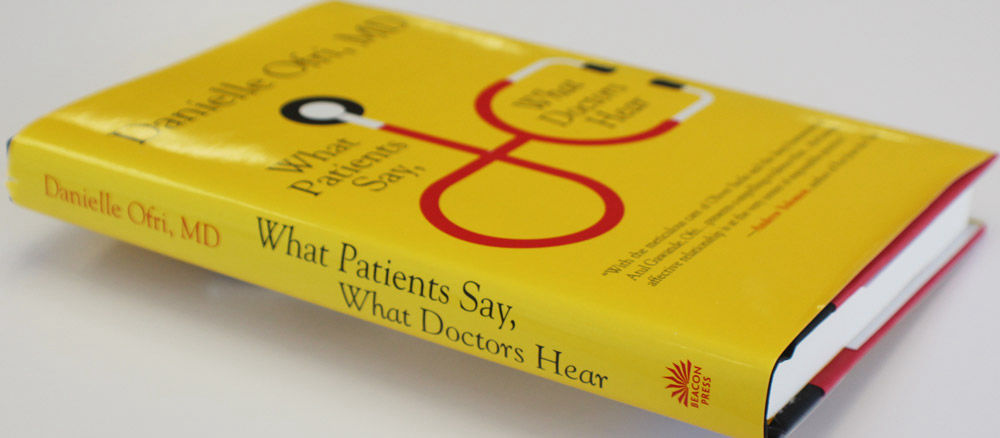Three Ways to Improve Listening
(1) Hear the Story
Let patients tell their story uninterrupted. The average story takes 2 minutes.
(2) Teach Back
When conveying your treatment plan, invite patients to take notes while presenting the plan and ask them to restate the key points.
(3) Explore
Is your patient noncompliant? Try a new question: “What is the most challenging part of living with your illness?”
Read the book
Watch the Talk
’ve had the privilege to observe thousands of appointments, inpatient rounds and patient-family conferences. Most are satisfying for both the patients and the providers, but some simply miss the mark. Why? Dr. Danielle Ofri answers this question in her book What Patients Say, What Doctors Hear. Ofri organizes the research on what makes conversations successful for both patients and physicians. The takeaway–strong evidence that listening improves patient outcomes and is the single most powerful diagnostic tool we have in medicine.
The average patient story takes under 2 minutes (really)
Patients come to appointments loaded with concerns and issues, eager to pack issues into precious minutes. Doctors are under pressure to be efficient. They are aware of the patient in front of them, but also those waiting. The result is a perfect storm. Patients want to tell their story and doctors are trained to get the chief complaint. The result–most patients are interrupted within 12 seconds of starting their story. Patients will frequently start their story over again.
Ofri wondered how long a patient would talk if uninterrupted. She asked her colleagues. Some thought two minutes, others thought five to ten – one feared all night. She found an article that concluded that uninterrupted patients talk an average of 92 seconds.
Dr. Ofri decided to give it a try in her own practice. She identified two unexpected benefits: her patients said they felt better, and she actually felt better about the care she delivered. One of Dr. Ofri’s most difficult patients closed the visit by saying, “Just talking about all this has actually made me feel better.” Dr. Ofri commented, “This was the first time I’d had a visit with this patient in which I felt good about it, like I was actually doing something to help. (p. 27)
Listening helps patients learn
In a study of doctors attempting to convey information to their patients, researchers identified the most common strategy as repetition. Ofri explains that repetition comes across to patients as haranguing. The second most common strategy was explanation, which often includes unnecessary detail and jargon.
Ofri recommends these three best practices:
- Summarizing the information
- Asking the patient to take notes
- Asking the patient to restate the key points
Have a Book Club?
Get the discussion questions from Dr. Ofri for this book here.
Ask about the patient’s challenges to quickly understand non-compliance
What if the patient isn’t following the plan? Noncompliance is a hot issue in health care. In a Georgetown University study of diabetes patient visits, doctors used various strategies to increase engagement: reciting facts and figures, appealing with emotion and persuasion, scare tactics of possible amputations and heart attacks. What is interesting that patients were aware of all of these facts, but the problem lay elsewhere – usually in social pressures, medication side effects, stress or family pressures. Unfortunately, this information rarely was shared in the visit.
Ofri’s solution was to add one new question, “What are the hardest challenges in dealing with your illness?” She reports that nine times out of 10 this question yields the most important kernel of the medical visit. Ofri argues that this question gets to the meat of the appointment in the shortest time possible.
Chrissy Daniels
In Ghana, Value Engineer Cindy Spangler, surgeons Kate Smiley and Marta McCrum found that patient safety rests on simple ideas that are hard in practice.
Utah’s Chief Medical Quality Officer Dr. Bob Pendleton shares his sister's experience navigating cancer care and challenges the idea of what it means to be a doctor: What if we were committed to understanding what matters to our patients, and then we used that information to improve care?
Health care is full of high emotion—especially right now. Thankfully, there’s a simple framework we can follow to de-escalate with compassion. Hospitalist and UACT co-director Claire Ciarkowski introduces NURSE: a simple mnemonic for responding with empathy.
